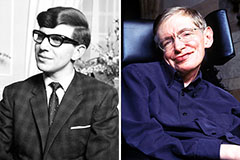The application of ultrasonic waves at 1/3 MHz in the realm of medicine has shown remarkable potential for accelerating tissue healing. This therapeutic modality utilizes low-intensity acoustic energy to stimulate cellular repair within injured tissues. Studies have demonstrated that treatment to 1/3 MHz ultrasound can enhance blood flow, minimize inflammation, and accelerate the production of collagen, a crucial protein for tissue repair.
- This non-invasive therapy offers a alternative approach to traditional healing methods.
- Experimental data suggest that 1/3 MHz ultrasound can be particularly effective in treating a range of conditions, including:
- Ligament tears
- Stress fractures
- Wound healing
The precise nature of 1/3 MHz ultrasound allows for controlled treatment, minimizing the risk of complications. As a comparatively acceptable therapy, it can be incorporated into various healthcare settings.
Utilizing Low-Frequency Ultrasound for Pain Relief and Rehabilitation
Low-frequency ultrasound has emerged as a potential modality for pain alleviation and rehabilitation. This non-invasive therapy utilizes sound waves at frequencies below the range of human hearing to promote tissue healing and reduce inflammation. Clinical trials have demonstrated that low-frequency ultrasound can be successful in treating a variety of conditions, including muscle pain, joint stiffness, and tendon injuries.
The process by which ultrasound achieves pain relief is multifaceted. It is believed that the sound waves produce heat within tissues, increasing blood flow and nutrient delivery to injured areas. Moreover, ultrasound may influence mechanoreceptors in the body, which relay pain signals to the brain. By altering these signals, ultrasound can help reduce pain perception.
Potential applications of low-frequency ultrasound in rehabilitation include:
* Enhancing wound healing
* Boosting range of motion and flexibility
* Developing muscle tissue
* Minimizing scar tissue formation
As research continues, we can expect to see an increasing understanding of the therapeutic benefits of low-frequency ultrasound in pain relief and click here rehabilitation. This non-invasive and relatively safe modality presents great opportunity for improving patient outcomes and enhancing quality of life.
Investigating the Therapeutic Potential of 1/3 MHz Ultrasound Waves
Ultrasound treatment has emerged as a potential modality in various clinical fields. Specifically, 1/3 MHz ultrasound waves possess unique properties that point towards therapeutic benefits. These low-frequency waves can infiltrate tissues at a deeper level than higher frequency waves, facilitating targeted delivery of energy to specific regions. This characteristic holds significant promise for applications in conditions such as muscle pain, tendonitis, and even regenerative medicine.
Studies are currently underway to fully define the mechanisms underlying the therapeutic effects of 1/3 MHz ultrasound waves. Preliminary findings indicate that these waves can promote cellular activity, reduce inflammation, and optimize blood flow.
Clinical Applications of 1/3 MHz Ultrasound Therapy: A Comprehensive Review
Ultrasound therapy utilizing a resonance of 1/3 MHz has emerged as a potential modality in the domain of clinical applications. This extensive review aims to explore the diverse clinical uses for 1/3 MHz ultrasound therapy, offering a concise summary of its mechanisms. Furthermore, we will investigate the outcomes of this treatment for various clinical conditions the current findings.
Moreover, we will analyze the likely advantages and challenges of 1/3 MHz ultrasound therapy, providing a unbiased outlook on its role in contemporary clinical practice. This review will serve as a invaluable resource for clinicians seeking to deepen their knowledge of this therapeutic modality.
The Mechanisms of Action of 1/3 MHz Ultrasound in Soft Tissue Repair
Low-intensity ultrasound with a frequency around 1/3 MHz has shown to be an effective modality for promoting soft tissue repair. The effects by which it achieves this are still being elucidated. One mechanism involves the generation of mechanical vibrations that activate cellular processes including collagen synthesis and fibroblast proliferation.
Ultrasound waves also modulate blood flow, enhancing tissue vascularity and carrying nutrients and oxygen to the injured site. Furthermore, ultrasound may alter cellular signaling pathways, affecting the creation of inflammatory mediators and growth factors crucial for tissue repair.
The specific mechanisms underlying the therapeutic effects of 1/3 MHz ultrasound in soft tissue repair are still under research. However, it is clear that this non-invasive technique holds promise for accelerating wound healing and improving clinical outcomes.
Optimizing Treatment Parameters for 1/3 MHz Ultrasound Therapy
The efficacy of acoustic therapy at 1/3 MHz frequency is profoundly influenced by the carefully chosen treatment parameters. These parameters encompass factors such as exposure time, intensity, and frequency modulation. Strategically optimizing these parameters promotes maximal therapeutic benefit while minimizing potential risks. A thorough understanding of the underlying mechanisms involved in ultrasound therapy is essential for achieving optimal clinical outcomes.
Numerous studies have demonstrated the positive impact of optimally configured treatment parameters on a wide range of conditions, including musculoskeletal injuries, tissue regeneration, and pain management.
Concisely, the art and science of ultrasound therapy lie in determining the most effective parameter configurations for each individual patient and their particular condition.
 Haley Joel Osment Then & Now!
Haley Joel Osment Then & Now! Judge Reinhold Then & Now!
Judge Reinhold Then & Now! Mason Reese Then & Now!
Mason Reese Then & Now! Brooke Shields Then & Now!
Brooke Shields Then & Now! Stephen Hawking Then & Now!
Stephen Hawking Then & Now!